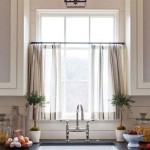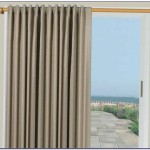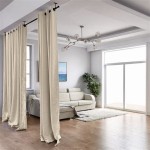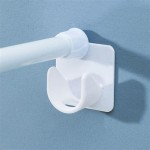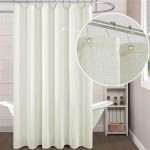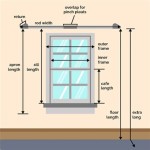Crystal Curtains For Living Room: An Exploration of Elegance and Functionality
Crystal curtains, often associated with luxury and opulence, represent a unique decorative element suitable for enhancing the aesthetic appeal of a living room. These curtains transcend the mere function of window coverings, offering a blend of light diffusion, privacy control, and visual artistry. The selection and implementation of crystal curtains require careful consideration of several factors, including crystal type, stringing method, spatial dimensions, and the existing design scheme of the room. This article delves into the multifaceted aspects of crystal curtains, providing a comprehensive guide to understanding their attributes and potential applications within a living room setting.
The term "crystal curtains" encompasses a broad spectrum of designs, ranging from delicate strands of faceted beads to elaborate displays of interconnected prisms. The underlying principle is the use of crystalline or glass elements to refract and reflect light, creating a dynamic interplay of luminance and shadow. This effect can transform the ambiance of a living room, imbuing it with a sense of glamour and sophistication. Beyond their aesthetic contribution, crystal curtains can also serve practical purposes such as partially blocking sunlight, defining spaces (particularly in open-plan layouts), and acting as a unique room divider.
Choosing the Right Crystal Material
The type of material employed significantly impacts the overall appearance and light-refracting qualities of crystal curtains. Several options are available, each with its own distinct characteristics and price point. Genuine crystal, typically lead crystal, offers the highest degree of brilliance due to its elevated refractive index. This means that it bends light more effectively than other materials, resulting in a more dazzling and vibrant display. Lead crystal, however, can be more expensive and requires careful handling due to its lead content. Alternatives include glass crystals, acrylic crystals, and even certain types of gemstones.
Glass crystals provide a good balance between cost and performance. They are less expensive than lead crystal but still offer a significant degree of light refraction. The quality of the glass itself is important; higher-quality glass will be clearer and provide a more brilliant sparkle. Acrylic crystals are the most affordable option and are often used in situations where durability is a concern. While they do not possess the same level of brilliance as genuine or glass crystals, they are lightweight, shatter-resistant, and available in a wide range of colors and shapes. The specific application and budget constraints will dictate the most appropriate material choice.
The cut and facet of the crystals are also crucial factors. A well-cut crystal will have numerous facets that are precisely angled to maximize light reflection. The complexity of the cut directly influences the amount of sparkle generated. Simple, smooth beads will offer a subtle shimmer, while more intricate, multi-faceted crystals will produce a more dramatic and intense display of light. The size of the crystals also plays a role; larger crystals will generally create a bolder and more noticeable effect, while smaller crystals can be used to create a more delicate and understated look.
Furthermore, the purity of the crystal matters. Impurities within the crystal structure can diminish its light-refracting capabilities and affect its clarity. Look for crystals that are free from bubbles, scratches, and other imperfections. The color of the crystal can also be manipulated to achieve specific design effects. Clear crystals are the most common and versatile, but colored crystals can be used to complement the existing color scheme of the living room or to create a striking contrast. For instance, amber-colored crystals can impart a warm and inviting glow, while blue or green crystals can evoke a sense of tranquility and sophistication.
Installation Techniques and Design Considerations
The manner in which crystal curtains are installed significantly impacts their visual impact and functionality. There are several methods available, each suited to different architectural styles and design preferences. One common approach involves suspending individual strands of crystals from a curtain rod or track. This allows for a flexible and customizable arrangement, enabling the creation of intricate patterns and designs. The spacing between the strands can be adjusted to control the amount of light that passes through and the degree of privacy provided.
Another approach involves creating a more solid curtain by connecting the crystals together using wire, string, or metal rings. This creates a more cohesive and structured look, resembling a traditional fabric curtain. This method is often employed to create a room divider or to block out a significant amount of sunlight. The density of the crystal arrangement will determine the level of opacity. A tightly packed arrangement will provide more privacy and block more light, while a more spaced-out arrangement will allow for more light to filter through. The stringing material should be chosen carefully to ensure that it is strong and durable enough to support the weight of the crystals.
The design of the curtain rod or track is also an important consideration. The rod should be strong enough to support the weight of the crystals and should be aesthetically compatible with the overall design of the living room. A simple, minimalist rod may be appropriate for a contemporary setting, while a more ornate rod may be better suited for a traditional or Victorian-inspired design. The color and finish of the rod should also complement the crystals and the other decorative elements in the room.
Lighting plays a crucial role in accentuating the beauty of crystal curtains. Strategically placed spotlights or LED strips can be used to highlight the crystals and create a dramatic play of light and shadow. Backlighting the curtains can create a stunning silhouette effect, while uplighting can emphasize their verticality and create a sense of height. The type of lighting chosen will depend on the desired effect and the overall ambiance of the living room.
Maintaining and Cleaning Crystal Curtains
To preserve the brilliance and longevity of crystal curtains, regular maintenance and cleaning are essential. Dust and grime can accumulate on the surface of the crystals, diminishing their light-refracting capabilities and dulling their appearance. The frequency of cleaning will depend on the environment and the amount of dust and dirt present. Generally, it is recommended to clean crystal curtains at least once or twice a year, or more frequently if they are exposed to a high level of dust.
The cleaning process should be gentle to avoid damaging the crystals or the stringing material. One effective method involves using a soft brush or cloth to remove loose dust and debris. For more stubborn dirt, a mild soap solution can be used. Mix a small amount of gentle dish soap with warm water and apply it to the crystals using a soft cloth or sponge. Avoid using harsh chemicals or abrasive cleaners, as these can scratch or damage the surface of the crystals. Rinse the crystals thoroughly with clean water to remove any soap residue.
After cleaning, it is important to dry the crystals thoroughly to prevent water spots from forming. Use a clean, soft cloth or microfiber towel to gently wipe each crystal. For larger curtains, it may be more practical to allow them to air dry. Open the windows to allow for good ventilation and ensure that the crystals are completely dry before closing the curtains or blinds. Alternatively, a hairdryer set on a low, cool setting can be used to speed up the drying process.
Regular inspection of the crystal curtains is also important to identify any loose or damaged crystals or stringing material. Promptly repair any damage to prevent further deterioration. Loose crystals can be reattached using a suitable adhesive, such as epoxy or jewelry glue. Worn or frayed stringing material should be replaced with new material to ensure the stability and integrity of the curtain. Proper care and maintenance will ensure that crystal curtains continue to enhance the beauty of the living room for many years to come. Dusting them regularly with a dry, soft cloth can prevent extensive cleaning needed down the line.

Crystal Glass Bead Curtain For Luxury Wedding Decor Singapore U

No 1 Best Kitchen Living Room Crystal Bead Curtains

1m Crystal Bead Curtain

25 Strings Snowflake Crystal Beads Door Curtain Doorway Drape Room Divider Decor

Best Crystal Curtains For Living Room Memories Of A Butterfly

Crystal Curtains Etsy Singapore

Crystal Beaded String Door Curtain Beads Fringe Room Divider Decor Window Panel Drapes
Crystal Curtains For Home At 450 Set In New Delhi Id 22630566962

Glass Crystal Home Decoration Of Faceted Beaded Curtain And Made In China Com

1m Crystal Beads Single String Divider Curtain Door Living Room Tassel Diy Drape

